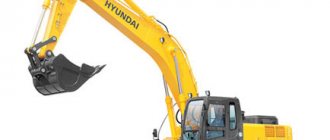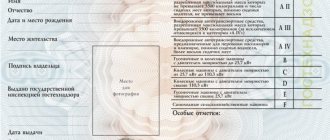Good afternoon, dear reader.
This article will discuss changes to traffic rules that came into effect on April 8, 2020 .
All innovations relate to the movement of heavy and large vehicles. That is, they apply primarily to trucks and do not apply to personal cars.
However, if you or your organization is engaged in freight transportation, then I recommend studying the updated version of the rules:
- Replacement of large and heavy cargo with vehicles.
- Permits for the movement of heavy and large vehicles.
- Exclusion of overall dimensions from traffic regulations.
- Is a yellow flasher required when escorting dangerous goods?
Replacement of large and heavy cargo with vehicles
So, from April 8, 2022, 10 additions have been made to the traffic rules. At the same time, the bulk of the changes are that the concept of “heavy cargo” has been replaced by the concept of “heavy vehicle”, and the concept of “large cargo” has been replaced by the concept of “large vehicle”.
Note. Let me remind you that the gradual replacement of these terms in regulatory documents has been going on for quite some time. For example, in the Code of Administrative Offenses they were replaced on July 24, 2015. Now legislators have gotten to the rules of the road.
Definitions have been updated in paragraphs 3.4, 3.5, 11.6 of the Traffic Regulations and paragraphs 8, 11, 15, 16 of the main provisions for the approval of vehicles for operation.
These innovations do not bring anything new to drivers, so we will not dwell on them.
Is a yellow flasher required when escorting dangerous goods?
In conclusion, let's look at another change in legislation that causes some misunderstanding. Let's consider paragraph 16 of the main provisions:
16. Flashing beacons of yellow or orange color are installed on vehicles:
16. Yellow or orange flashing lights are installed:
Please note the part of this clause relating to the transport of dangerous goods. The old version stated that yellow flashing lights are needed on vehicles accompanying a vehicle with dangerous cargo. The new edition says that the yellow flashing light is only needed for the vehicle itself with dangerous cargo, and there is no talk about accompanying it.
For comparison, consider paragraph 3.4 of the traffic rules:
3.4. A yellow or orange flashing light must be turned on on vehicles in the following cases:
This paragraph refers to the fact that an orange flasher is needed specifically when accompanying a vehicle transporting dangerous goods. So it can be assumed that when updating paragraph 16 of the Basic Provisions, legislators simply drafted the wording incorrectly.
Summing up the results of this article, it must be said that the changes from April 8, 2022 are rather “cosmetic” and they did not introduce anything fundamentally new to the traffic rules.
Nevertheless, I suggest you study the updated text of the traffic rules:
Source
Permits for the movement of heavy and large vehicles
Let's consider the updated paragraph 2.1.1 of the traffic rules:
2.1. The driver of a motor vehicle is obliged to:
2.1.1. Carry with you and, at the request of police officers, hand over to them for verification:
- in established cases, permission to carry out activities for the transportation of passengers and luggage by passenger taxi, waybill, license card and documents for the transported cargo, and when transporting large, heavy and dangerous goods - documents provided for by the rules for the transportation of these goods;
- in established cases, permission to carry out activities for the transportation of passengers and luggage by passenger taxi, waybill, license card and documents for the transported cargo, as well as special permits, in the presence of which, in accordance with the legislation on highways and on road activities, traffic on highways is allowed a heavy vehicle, a large vehicle or a vehicle transporting dangerous goods;
In this paragraph, the abstract concept of “documents provided for by the rules for the carriage of goods” is replaced by the more specific term “special permit”.
The driver must present a special permit if he drives:
- large-sized vehicle;
- heavy vehicle;
- a vehicle transporting dangerous goods.
How to obtain a permit to transport dangerous goods?
Vehicles transporting large, heavy and dangerous goods are allowed to move at a speed not exceeding the speed established when agreeing on the terms of transportation.
Heavy vehicles, large vehicles and vehicles transporting dangerous goods are allowed to move at a speed not exceeding the speed specified in a special permit, in the presence of which, in accordance with the legislation on highways and on road activities, such vehicles are allowed to travel on highways. Vehicle.
In addition to carrying the permit, the driver must obey the speed limits specified on the permit. This is stated in the updated paragraph 10.4 of the traffic rules.
Aviation transport
Heavy cargo during air transportation includes cargo whose weight exceeds 80 kg.
Basis - Guidelines for freight transportation on domestic routes (RGP-85), paragraph 2.9.1.
If the specified standard is exceeded, the customer will require separate approval of the route for transportation. This is due to the fact that not all airports can handle cargo handling for heavy items.
For example, individual airports may handle the following cargo without additional approval:
| Airport city | Acceptable weight of the item (no approval required) |
| Barnaul | Up to 200 kg |
| Astrakhan | Up to 150 kg |
| Volgograd | Up to 100 kg |
| Vladikavkaz | Standard standard (up to 80 kg) |
| Krasnodar | Up to 200 kg |
| Omsk | Up to 100 kg |
| Stavropol | Up to 250 kg |
| Ufa | Up to 150 kg |
By separate agreement, individual conditions and transportation route will be determined, as well as the procedure and conditions of loading and unloading operations.
Transportation will require a separate package of accompanying and permitting documents.
Exclusion of overall dimensions from traffic regulations
Another important change was made to paragraph 23.5 of the traffic rules:
23.5. Transportation of heavy and dangerous goods, movement of a vehicle whose overall dimensions, with or without cargo, exceed 2.55 m in width (2.6 m for refrigerators and isothermal bodies), 4 m in height from the surface of the roadway, and in length ( including one trailer) 20 m, or the movement of a vehicle with a load protruding beyond the rear point of the vehicle's overall dimensions by more than 2 m, as well as the movement of road trains with two or more trailers are carried out in accordance with special rules.
23.5. The movement of a heavy and (or) large vehicle, as well as a vehicle transporting dangerous goods, is carried out taking into account the requirements of the Federal Law “On Highways and Road Activities in the Russian Federation and on Amendments to Certain Legislative Acts of the Russian Federation.”
Let's see what exactly has changed at this point:
1. Heavy vehicles and vehicles transporting dangerous goods must comply with the requirements of special rules. Everything here remains the same.
2. Road trains with two or more trailers are excluded from clause 23.5, that is, such vehicles do not need to comply with special rules from April 8, 2022.
3. As for large-sized vehicles, the situation with them is the most confusing. The old version of the rules directly indicated the maximum dimensions, exceeding which requires special permission. In the new edition, these figures are missing, so for clarification you need to refer to paragraph 18 of Article 3 of the Law “On Highways and Road Activities”:
18) large-sized vehicle - a vehicle whose dimensions, with or without cargo, exceed the permissible dimensions established by the Government of the Russian Federation;
This paragraph provides a link to another regulatory document - Appendix No. 1 “Permissible dimensions of a vehicle” to Government Decree No. 2200 “On approval of the rules for the transportation of goods by road and on amendments to paragraph 2.1.1 of the traffic rules of the Russian Federation”:
Length Single vehicle - 12 meters Trailer - 12 meters Road train - 20 meters The length of the cargo protruding beyond the rear point of the vehicle dimensions should not exceed - 2 meters
Width All vehicles - 2.55 meters Isothermal vehicle bodies - 2.6 meters
Height of all vehicles - 4 meters
So, the requirements for the height and width of the vehicle have not changed at all. It’s just that now they are located in a different regulatory document.
As for the length requirements, they have become stricter. From 8 April 2022, the length of the single vehicle and the length of the trailer are also important. Each of them should not exceed 12 meters . If exceeded, the vehicle is considered oversized and must comply with the relevant transportation regulations.
Motor transport
In road transport, heavy cargo is understood as cargo that, during transportation, creates a load that exceeds the established standards in terms of each axle of the vehicle (in this case, the weight of the cargo and the weight of the vehicle are summed up).
Road transport in the CIS
Permissible loads for trucks during transportation between CIS countries (Agreement on the masses and dimensions of vehicles carrying out interstate transportation on the roads of the CIS member states of 1999):
Vehicle type
Maximum permissible load (vehicle + cargo), tons
Single cargo vehicles
24 (25 for cars with air suspension)
Road trains / tractor units with trailers
36 (40 with axle distances greater than 1.8 m)
24 (28 for articulated axles)
When transporting cargo within the Russian Federation, carriers must be guided by the “Rules for the transportation of goods by motor transport”, approved by Decree of the Government of the Russian Federation No. 272 (from 2011 with current amendments), which establish the maximum weight of the entire vehicle (including cargo) and the maximum axle load.
Maximum vehicle weight in the Russian Federation
The indicated parameters in Appendix 1 to the Rules of Transportation:
Vehicle type
Maximum permissible weight (vehicle + cargo), tons
Single cargo vehicles
Road trains / tractor units with trailers
When compared with the Agreement of the CIS countries, it is clear that the differences are insignificant.
Maximum permissible axle load in the Russian Federation
According to Appendix 2 to the Rules for Transportation by Motor Transport:
Axle distance
Maximum load on one axle depending on the standard road load
For a road designed for a load of 6 t (single wheels/dual wheels)
For a road designed for a load of 10 tf (single wheels/dual wheels)
For a road designed for a load of 11.5 t (single wheels/dual wheels)
From 1.8 to 2.5 m (hereinafter considered as a single axle)
From 1.8 to 2.5 m (hereinafter considered as a single axle)
More than three close axes in a group
From 1.8 to 2.5 m (hereinafter considered as a single axle)
For closely spaced axles equipped with 4 or more single or double wheels on each axle (for groups of 2 or more axles)
From 1.8 to 2.5 m (hereinafter considered as a single axle)
During control weighing, a two percent error is allowed (clause 4 of Article 31 257-FZ of 2007 in the current edition), further excess without permits is a fine.
Regional authorities have the right to establish seasonal restrictions for maximum permissible standards within the constituent entities of the Russian Federation on individual routes or sections thereof.
Heavy cargo during groupage transportation
In some cases, the carrier of groupage cargo may ask for an additional fee for exceeding weight standards. Let's consider the situation using the example of a standard 20-ton truck:
If the specified weight standard for one pallet/pallet is exceeded, the carrier will have to reduce the number of transported pallets in order to pass weight control. And this is a reason to increase the cost of one piece of cargo to compensate for the cost of all reductions.
Special permits for the transportation of heavy cargo
Moving vehicles whose weight and axle load exceed the established standards is prohibited without special permits.
Permissions can be:
Registration is possible in several ways:
To analyze and approve travel along a given route with heavy cargo, you must provide the following package of documents:
Based on the results of the application, permission or refusal will be issued.
The costs of transporting heavy cargo will consist of the following components:
For driving along routes not indicated in the permit, as well as for violating other regulations, penalties will be imposed on the carrier.
Shipping
Heavy cargo when transported by sea means shipments whose weight exceeds 35 tons.
Separately, there are unique large-sized heavy cargo (UKTG) - these are oversized cargo, the weight of which exceeds 100 tons.
Basis - Safety rules for sea transportation of large and heavy cargo (KTG) - RD 31.11.21.24-96 (put into effect by Rosmorflot Order No. 44 of 1996).
Transportation of heavy cargo is impossible without drawing up a project.
The project executor may be a carrier company or another competent organization (for example, a research institute). The project is calculated based on the technical specifications of the customer/client.
The project should indicate:
The project is coordinated with the Maritime Register of Shipping.
Project organizations may supervise the procedures for loading, unloading, securing and transporting cargo in accordance with the project.
Rail transportation
Russian Railways JSC classifies heavy cargo as cargo that fits within the permissible dimensions, but creates loads that exceed the standards established for universal rolling stock:
In this case, the loads created on individual structural elements and the displacement of the center of gravity can be taken into account.
International rail transport may have special maximum weight requirements. For example (according to instructions DCh-1835 for the transportation of oversized and heavy cargo on the railways of the CIS member states, the Republic of Latvia, the Republic of Lithuania, the Republic of Estonia):
In rolling stock on the territory of the Russian Federation, it is possible to use special freight cars - transporters that are capable of transporting up to 500 tons of cargo (28-axle or 32-axle models).
Movement of heavy cargo and transport wagons is possible only after approval procedures:
Within Russia, heavy shipments also require an approval procedure with the Russian Railways management department. You need to provide:
Source










